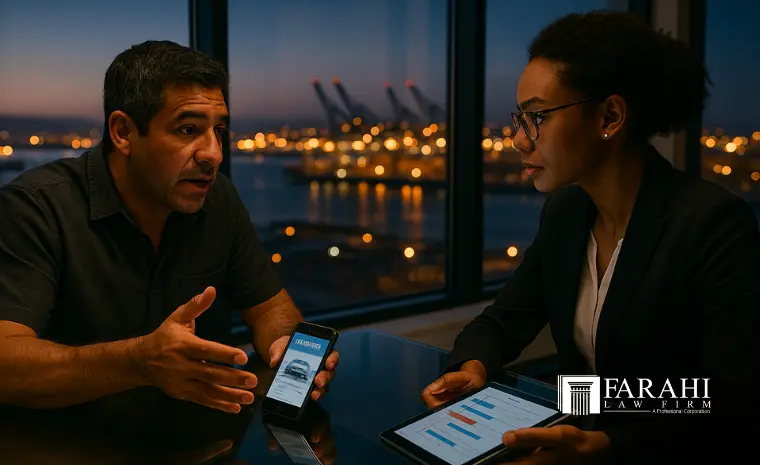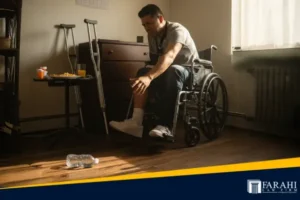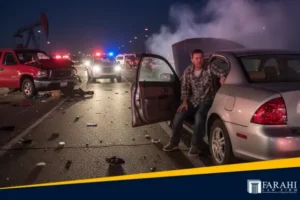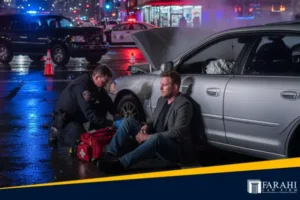Summary
After a crash in California, your auto policy becomes your safety net. Focus on five key areas: liability limits, medical payments, UM/UIM coverage, exclusions, and policy deadlines. Review these closely to protect your rights and avoid paying out-of-pocket accident costs. Learn what coverage matters most—and why.
After a crash, confusion and stress can quickly take over—especially when you’re trying to understand what your auto policy covers. For drivers and accident victims in California, knowing your rights and responsibilities under your policy is essential to avoid delays and unexpected financial burdens.
Whether you’ve been involved in a fender bender on Western Avenue or a more serious accident near the Port of Los Angeles, understanding your policy could make or break your recovery.
In this blog, we’ll explain the key parts of your auto policy and how to use them after a crash.
Why Does It Matter After a Crash?

California auto accidents often involve complex legal and insurance issues. According to the National Highway Traffic Safety Administration, traffic-related deaths in California rose by 7.6%, increasing from 3,980 fatalities in 2020 to 4,285 in 2021.
Many drivers aren’t aware that their auto insurance could either fully support them or leave them stuck with medical bills and other accident costs they didn’t expect.
After a crash, your insurance agent may walk you through your coverage, but they might not say clearly: there are time limits, exclusions, and gaps you should be aware of. And those can affect your ability to file an insurance claim or get the maximum compensation you deserve.
Key Areas of an Auto Policy to Review After an Accident
Whether you’re at fault or not, here are the most critical sections of your auto policy to understand:
1. Liability Limits
California law requires these to cover injuries and property damage you cause to others.
As of January 1, 2025, California updated its minimum liability requirements for the first time since 1967. The California DMV specifies the minimum limits as follows:
- $30,000 for injury or death of a single person
- $60,000 for injury or death of multiple people
- $15,000 for property damage.
If your policy was issued before 2025 and only meets the old minimums, it will automatically update to the new requirements at renewal. However, you could be personally responsible beyond those limits if your accident increases costs.
2. Medical Payments Coverage (MedPay)
Covers medical expenses for you and your passengers—regardless of who is at fault. This is optional coverage in California that may be offered by insurers but is not required. It’s beneficial for passenger vehicle drivers facing emergency medical bills.
3. Uninsured/Underinsured Motorist Coverage (UM/UIM)
This protects you if the other driver lacks insurance or has insufficient coverage. This is crucial in California auto accidents, where distracted driving and hit-and-runs are common.
4. Exclusions and Limitations
Not all situations are covered. Many insurance policies exclude:
- Driving under the influence
- Using your car for rideshare (unless you have the proper endorsement)
- Drivers not listed on your policy
Always read the fine print or ask your insurance agent.
5. Deadlines to File Insurance Claims
Most insurance policies have strict timelines for reporting accidents and submitting documents. Missing these deadlines can void your ability to recover losses.
Additional Coverage Options That Can Help
Some insurance options are worth considering for added protection:
Coverage Type | What It Covers |
Collision coverage | Damage to your car from a crash, even if you’re at fault |
Comprehensive coverage | Theft, vandalism, weather, or other non-collision events |
Full coverage | Combines liability, collision, and comprehensive coverage |
Comprehensive insurance | Especially helpful in high-risk areas like downtown San Pedro |
Action Steps After a Crash
Here’s what you should do immediately after an accident in San Pedro:
- Get medical attention – Even if symptoms seem minor.
- Take photos – The scene, vehicle, and road conditions.
- Exchange information – With other drivers and witnesses.
- Request a police report – Crucial for your personal injury claim.
- Contact a top-rated car accident attorney in San Pedro – Don’t navigate the legal process alone.
- File your insurance claim – Within the policy’s deadline.
Top 5 Reasons to Contact a Car Accident Lawyer
Legal guidance can protect your rights if your case involves severe injuries, unclear liability, or denied insurance claims.
- Navigate insurance policies and deadlines.
- Gather and organize witness statements.
- Pursue fair compensation for your injuries.
- Handle negotiations with insurers.
- Help you understand your legal options.
A top-rated car accident attorney in San Pedro can guide you through the process and fight for your rights.
FAQs
You can claim under your uninsured motorist coverage if you added it to your policy.
Not always, but it helps cover your repairs while waiting for the other driver’s insurer.
Usually within 24–72 hours. Check your policy for specific deadlines.
Yes. Some injuries have a long-term impact. Seek medical care and consult a Farahi Law Firm car accident lawyer.
That doesn’t automatically prevent compensation. An experienced accident attorney can evaluate your case.
Know Your Coverage. Know Your Rights.
Understanding your auto policy isn’t just about paperwork—it’s about protecting yourself from the financial burden and legal stress that follows an accident. For drivers in San Pedro and across California, knowing what your policy covers can mean the difference between struggling with costs and securing the maximum compensation you’re entitled to.
If you’ve been in an accident and don’t know what your policy covers—or how to fight back against denied claims—contact a car accident attorney in San Pedro today. We offer free consultations and will help you confidently navigate the road to recovery.



